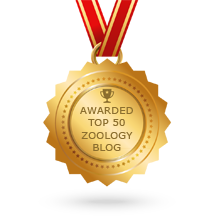 Dale started at IUPUI hoping for a degree in Biology before changing to Anthropology and as a result, has a very diverse background in Geology, Zoology, Paleontology, Anatomy, Archaeology, Psychology, Sociology, Literature, Latin, Popular Culture, Film criticism, Mythology and Folklore, and various individual human cultures especially mentioning those of the Pacific and the Americas. He has a working knowledge of every human fossil find up until his graduation and every important Cryptozoological sighting up to that point. He has been an amateur along on archaeological excavations in Indiana as well as doing some local tracking of Bigfoot there. Now he is on the CFZ bloggo....
Dale started at IUPUI hoping for a degree in Biology before changing to Anthropology and as a result, has a very diverse background in Geology, Zoology, Paleontology, Anatomy, Archaeology, Psychology, Sociology, Literature, Latin, Popular Culture, Film criticism, Mythology and Folklore, and various individual human cultures especially mentioning those of the Pacific and the Americas. He has a working knowledge of every human fossil find up until his graduation and every important Cryptozoological sighting up to that point. He has been an amateur along on archaeological excavations in Indiana as well as doing some local tracking of Bigfoot there. Now he is on the CFZ bloggo.... First blog item: Excuse me, Water Horses INCLUDING Nessie
The problem is that anything not immediately identified that is sighted on Loch Ness is automatically "Nessie". There are more than one kind of unknowns involved, and another part of the problem is that "Nessie" is somehow permanently attached to that lake and somehow peculiar to it. None of the unknowns that appear there are confined to Loch Ness and exclusive to it.
What BEGAN as "The Loch Ness Monster" was traditionally The Water Horse. THAT was a horse-sized and shaped animal that went into the water. It was recorded as such in reports at least as recently as 1934. However, the more spectacular reports that caught the attention of the press and what the world came to know as "Nessie" was the Long-Necked type of Sea Serpent, and was immediately identified as such by those in the know at the time (eg, R.T. Gould and A.C. Oudemans) THAT is something else again, and something that has a worldwide distribution.
THE characteristic Freshwater "Monster" in what have been called "The Monster Latitudes", Primarily the Taiga zone as identified by Ivan Sanderson (who also used the generic term Northern Lake Monsters but MEANT this same distribution) IS "The Water Horse". That is the distribution for the Elk/Moose. The Long-Necked Sea Serpent type turns out to be mostly riverine and temporary when it is seen inland. This is also true of the Giant Eel types, but the proportions differ to such an extent that the two types are easily separated statistically. Giant Eels are also traditional on Loch Ness, as well as Master-otters, and both of them SPECIFICALLY in Loch Ness from the older records.
Best Wishes, Dale D.


















No comments:
Post a Comment